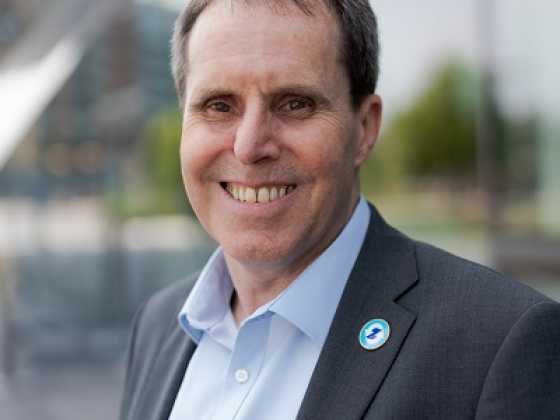Review: Commercial GREENFLEET

Commercial GREENFLEET took place digitally on 23 September, with the aim of exploring the options for eliminating van and truck emissions ahead of 2050
Sponsored by van manufacturers Maxus, Commercial GREENFLEET was hosted by LowCVP’s managing director Andy Eastlake, who opened the event with praise for the van and lorry fleets that have kept the UK functioning during the pandemic.
Michael Mansbridge from the Office for Low Emission Vehicles (OLEV) kicked off the presentations with an overview of the government’s strategy for zero emission vehicles. He highlighted that the UK is making good progress, with 240,000 vehicles funded with the plug-in grant. Acknowledging that the van market is in an earlier stage, he said that 10,000 vans have been purchased using the plug-in grant, and that there are over 20 van models that are eligible, signalling that the market is developing.
The issue with HGVs however is more complex. “Due to their size, they need larger batteries, which makes them heavier and has an impact on price, payload and range,” explains Michael, adding however that a number of manufacturers are announcing plans for zero emission trucks.
Rhona Munck from Transport for London spoke about the Mayor of London’s vision for a zero carbon city by 2050, and the transport measures put in place to make this happen, such the capital’s Electric Vehicle Infrastructure Project. The city has an aim for 300 rapid chargers by the end of 2020, and has so far achieved 260.
Logistics
Natalie Chapman from Logistics UK (formerly the Freight Transport Association) pointed out that targets to achieve net zero by 2050 gives a clear end goal, but the challenge is identifying the necessary steps to make this possible. “We need a clear pathway for HGVs,” commented Natalie. “We need to finalise the ultra-low truck definition, and an ultra-low emission fuel definition is also needed.” This, Natalie explains, will help manufacturers and fleet operators concentrate their efforts on the right solution.
In the meantime, large goods vehicles need to concentrate on the vehicle efficiencies available now. Having a large payload is one way of reducing emissions, as it means less journeys taking place.
Hydrogen for zero emissions
Hydrogen is being touted as the zero emission solution for long haul heavy trucks. The fuel has seen increased attention in the last few months, with the establishment of the UK Strategy Now campaign – which comprises over 60 cross-party MPs and peers, as well as more than 50 UK and European businesses who are driving forward the hydrogen agenda.
Anthony Green from the National Grid spoke about the advantages of hydrogen, which include zero tailpipe emissions, greater range and faster refuelling - addressing many of the issues faced by electric vehicle drivers. The hydrogen refuelling infrastructure however is very limited at the moment, as well as the choice of hydrogen fuelled vehicles.
Marcus Helliwell, sourcing developer at IKEA is responsible for sourcing all suppliers who provide a service to IKEA customers, placing sustainability at the heart of procurement. Marcus spoke about IKEA’s aim to transition to a zero-emission delivery fleet by 2025, and how the company is taking a staggered approach to EV adoption.
Event sponsor Mike Haran from Maxus UK, formerly LDV, spoke about the company’s newest electric van, the e DELIVER 3, which is the company’s first van that will not offer a diesel engine alternative.
The van has a range of up to 198 miles (NEDC) or 150 miles (WLTP) on a single charge of the 52.5kWh battery. The van comes in three variants with two wheelbase options.
Charging infrastructure
Taking on the subject of the electric vehicle charging infrastructure, Sam Clarke gave an update on the UK’s first electric only forecourt GRIDSERVE, of which he is chief vehicle officer.
Sam brings years of experience with him to the role, having established last mile logistics company Gnewt Cargo in 2009.
Sam highlighted that while the current 2,000 rapid charging locations may be ok for the amount of electric vehicles on the road now, it is not good enough in the future. When it comes to ultra rapid chargers, there are only 40 locations (excluding Tesla) and those ones are oversubscribed.
Perhaps due to inexperience when chargers where installed, many of the charging locations are unsuitable, with Sam pointing out one occasion where he had to park in a flower bed in order to access a charge point.
As a solution to this, electric forecourt GRIDSERVE will be opening soon in Braintree, Essex, and the company has over 100 more sites in the pipeline.
The forecourt allows for thirty electric vehicles to be charged simultaneously with high power chargers that can deliver up to 350kW of charging power, enabling people to add 200 miles of range in just 20 minutes.
Event sponsor Dean Hedger, new business development manager at The AA, covered electric vehicles from a breakdown and maintenance point of view. Dean highlighted that while less than one per cent of breakdowns is from an electric vehicle, as the market grows, this will increase.
A perceived lack of EV engineers could be a reason for fleets not investing in electric, and so Dean explained how the AA is addressing this problem by upskilling all its engineers so they can deal with EVs.
The AA is also providing support for charge point operators, such as SWARCO, resolving faults at the end of the phone. The AA is also exploring a field-based technician option to maintain the country’s growing EV infrastructure.
Using what’s viable now
Picking up on the point Natalie Chapman raised about how HGV fleets need to do what they can now while the zero emission alternatives are not there, Graham Thomas from Ocado spoke about his experience of using natural gas trucks, calling it “the only viable alternative fuel available now”.
The environmental benefits of switching to natural gas include 99 per cent fewer particulate emissions and 70 per cent less nitrogen oxide than the latest diesel standard. Natural gas-powered vehicles are also, on average, 10db quieter than diesel vehicles.
Ocado has 46 CNG trucks, which will raise to 60 by the end of the year. In January 2019, Ocado became the first UK retailer to self-fund the purchase of an onsite grid-connected gas refuelling station.
The event had digital breakout sessions, where delegates could network and put forward questions to consultant experts, including Alun Davies from ElectrAssure; Owain Pearce from Oxford Direct Services, Brian Robinson from LowCVP, and Matthew Hunt from GasRec.
Simon Penny-Smith from Forktruck Solutions meanwhile was on hand to discuss the company’s range of environmentally friendly lithium powered forklift trucks, warehouse equipment and utility vehicles.






